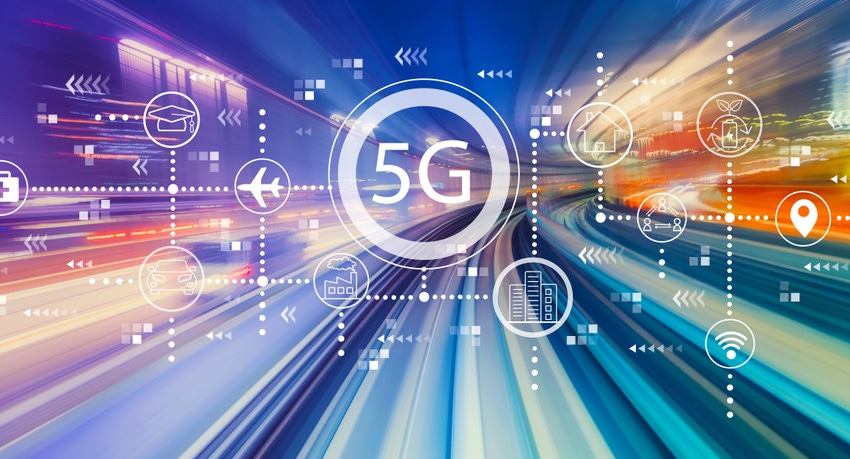Telefónica, Telia, Globe indulge in some 5G back-slapping
There are all manner of metrics that telcos cite when crowing about their 5G milestones, and these last few days have seen some top-notch braggadocio.
July 6, 2021

There are all manner of metrics that telcos cite when crowing about their 5G milestones, and these last few days have seen some top-notch braggadocio.
Telefónica Germany let everyone know this week that its mobile network carried 1 billion Gigabytes – or 1 Exabyte – of data during the first six months of 2021, representing a doubling of data usage in just two years. Go back just five-and-a-half years, and O2 Germany’s network carried 178 million Gigabytes in the whole of 2015.
“We are providing our 44 million customers with an increasingly powerful network. Data usage on our O2 network is growing by around 50 to 60 percent per year, setting new records month after month,” said Telefónica Germany CEO Markus Haas, in a statement.
“Our customers are booking ever larger data packages to use their digital applications on the move. 5G will further boost data growth. Through our comprehensive network expansion and network investments in the billions, we will continue to meet the trend of increasing data volumes in the future,” he said.
Late last week, Haas appeared on German TV where he highlighted that Telefónica’s 5G network, which runs on 3.6-GHz spectrum, now boasts 2,000 sites spread across 80 cities, including the top five by population: Berlin, Cologne, Frankfurt, Hamburg and Munich.
By the end of the year, through its ‘5G Expansion Turbo’ programme, Telefónica Germany aims to cover more than 30 percent of the population with 5G, reaching the whole of the country by 2025.
“We are in the middle of the most ambitious network rollout in our company’s history,” Haas said. “The potential of 5G is huge, both for new business models and processes in the economy and for a completely new real-time consumer experience.”
Meanwhile, on the other side of the Baltic, Telia this week demonstrated its 5G prowess by setting what it claims is a new speed record for Sweden. In partnership with Ericsson, the operator recorded a speed of 2.2 Gbps on an iPhone 12 connected to its live network in central Stockholm.
“Using the 3.5 GHz band we acquired in the 5G auction, Telia and Ericsson can now test what Swedish-developed 5G technology really is capable of,” said Staffan Åkesson, head of networks at Telia Sweden. “Reaching this speed live in our network is a fantastic achievement, not least because it’s done using a standard smartphone. This means that anyone with a Telia 5G subscription from can get to the same speed levels.”
Telia Sweden’s 5G network is currently available in 22 cities. It aims to cover more than 90 percent of the population by 2023, reaching 99 percent of the population and more than 90 percent of the landmass by 2025.
“High-performance 5G networks will be fundamental to take digitalisation to the next level and for the creation of new advanced applications in both industries and society at large”, said Jenny Lindqvist, head of Northern and Central Europe, Ericsson.
A little further afield, and Globe Telecom of the Philippines is also getting in on the act. Late last week the operator announced that the number of 5G devices connected to its network topped 700,000 at the end of May, up from 560,000 at the end of March.
“We are expecting the rise in numbers as we make the 5G technology more pervasive in key locations not only in Metro Manila but in highly-urbanised cities in Visayas and Mindanao,” said Joel Agustin, SVP for program delivery, at Globe’s network technical group. “The entry of affordable 5G-capable mobile devices has also made it possible for more people to use the technology.”
Citing figures from Opensignal, Globe said the average 5G download speed in the Philippines is 141 Mbps, putting it ahead of regional neighbours Hong Kong and Thailand, which have average speeds of 134.8 Mbps and 122.5 Mbps respectively.
Given all the money they’re spending on spectrum, network upgrades and site deployment, it is understandable that telcos want to keep the 5G hype-train running and celebrate every milestone as their rollouts gather pace. And with 6G just beginning to peep over the horizon, the industry is only going to get even more carried away.
About the Author(s)
You May Also Like








.png?width=300&auto=webp&quality=80&disable=upscale)


_1.jpg?width=300&auto=webp&quality=80&disable=upscale)


.png?width=800&auto=webp&quality=80&disable=upscale)